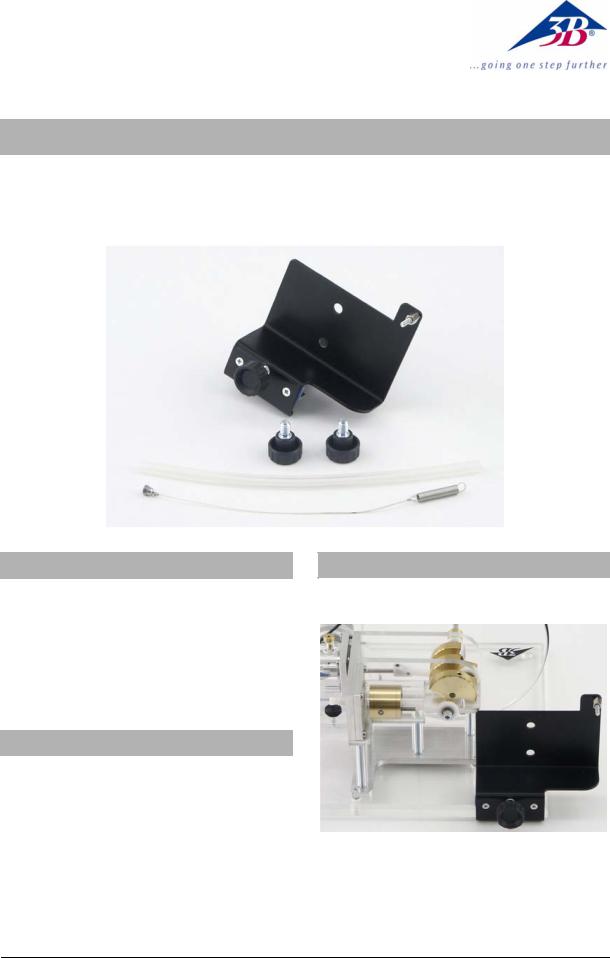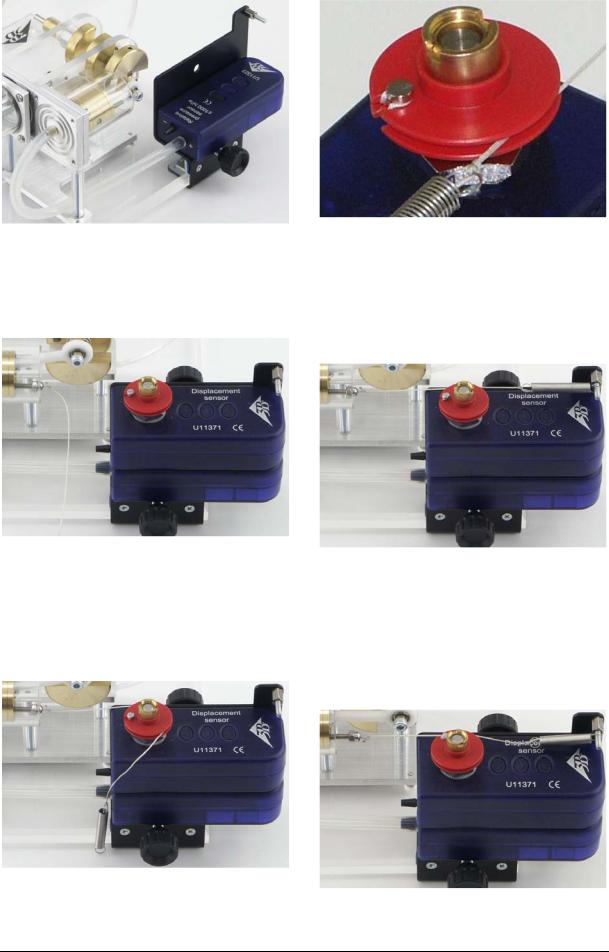3B Scientific Sensor Holder for Stirling Engine G User Manual

3B SCIENTIFIC® PHYSICS
Sensor holder for Stirling engine G U11372
Instruction manual
02/11 SD/ALF
1. Description
The sensor holder for the Stirling engine G model attaches both a relative pressure sensor (U11323) and a displacement sensor (U11371) to the Stirling engine (U10050), making it possible to plot a graph of pressure against volume for the Stirling engine with the help of the 3B NETlogTM interface (U11300115 or U11300-230).
2. Included
1 Sensor holder
1String with spring and cap nut
2Knurled screws M6 x 10
1 Silicone hose, 20 cm
3.Assembly
•Attach the sensor holder to the base plate of the Stirling engine as illustrated.
Fig. 1 Assembly of sensor holder
•Screw the pressure sensor into place in the bottom hole of the sensor holder using a knurled screw. Connect the nozzle marked “+” on the sensor to the hose nozzle on the working piston using a silicone hose.
1

Fig. 2 Assembly of pressure sensor
•Screw the cap nut attached to the string onto the threaded rod of the working piston and fit the displacement sensor in the top hole using a knurled screw.
Fig. 5 How the string is threaded around the pulley
•Move the working piston out all the way, then move the sensor holder in such a way that the spring is at its minimum extension. The attachments should be aligned such that the spring, the string and the working piston all move in the same plane.
Fig. 3 Attachment of string to working piston and assembly of displacement sensor
•Move the working piston and the pulley to the centre of their movement. Wrap the string around the pulley and attach the spring to the threaded rod. The string needs to go around the small screw on the pulley.
Fig. 6 Alignment of sensor holder
•Slowly turn the Stirling engine by hand and check that none of the moving parts catch on the sensor holder. Make sure, too, that the pulley does not turn to its limit and that it is not touched by the spring. If the spring does touch the pulley, it will be extended too far when the working piston is at the limit of its movement.
Fig. 4 Positioning of working piston and pulley and how |
|
to thread the string |
Fig. 7 Poorly aligned sensor holder whereby the string |
|
|
|
sags at full extension |
2
